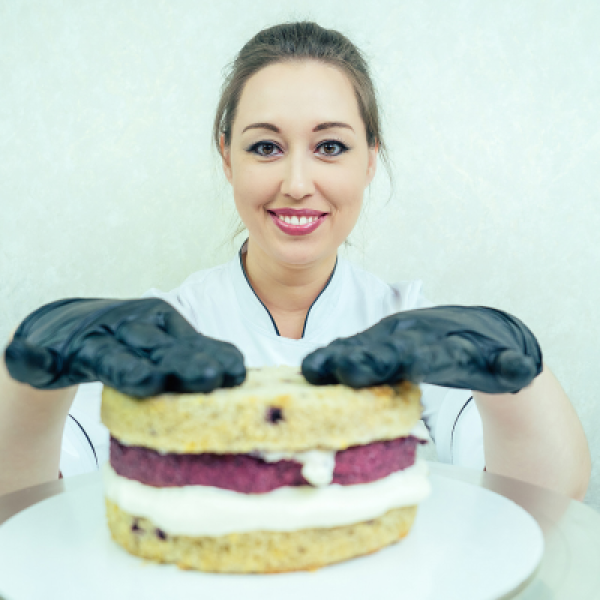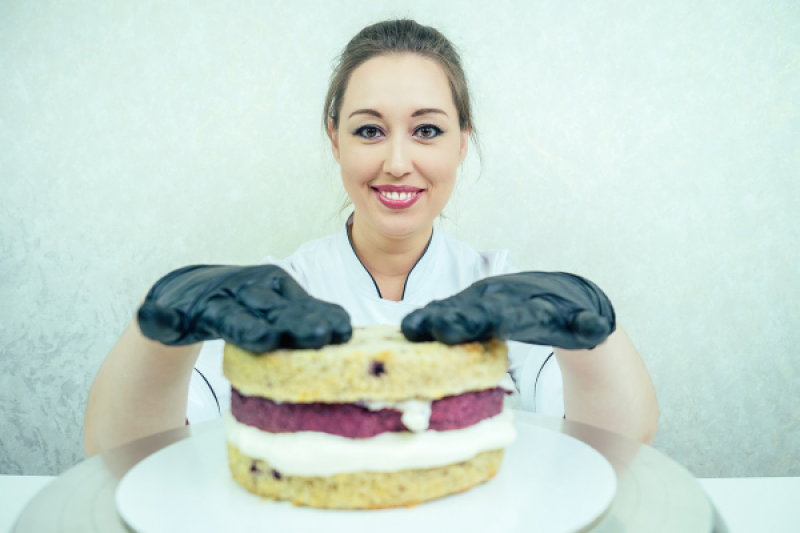The Recipe for Safe Baking


Introduction
Hey there! Are you interested in starting a home-based baking business in Australia? Well, before you break out the mixing bowls and apron, it's important to remember that food safety should always be your top priority. In this article, we'll go over some key food safety guidelines that you need to keep in mind when preparing and selling your baked goods, including tips on ingredient storage, handling, and labelling allergens.

Ingredient Storage
When it comes to baking, keeping your ingredients safe is a must! Follow these guidelines for proper ingredient storage to keep your treats fresh and delicious:
Dry Ingredients - Dry ingredients such as flour, sugar, and baking powder should be stored in airtight containers to prevent moisture and pests from entering. These containers should be kept in a cool, dry place away from sunlight.
Dairy Products - Dairy products such as milk, cream, and butter should be stored in the refrigerator at or below 4°C. It is important to check the expiry date and use-by date of these products and discard them if they are expired.
Eggs - Eggs should also be stored in the refrigerator at or below 4°C. Always check for any cracks or signs of damage before using them.
Fresh Fruit and Vegetables - Fresh fruit and vegetables should be stored in the refrigerator at or below 4°C. Any bruised or damaged produce should be discarded.
Spices and Herbs - Spices and herbs should be stored in airtight containers away from sunlight and moisture.
Finished Products - Having separate refrigeration is a must for the certified home-baker! This prevents cross-contamination and smells to invade your baked goods. It also allows for humidity settings to be specific for your buttercream products.

Preparation and Handling
To keep your baked goods free from bacteria and contamination, proper preparation and handling of ingredients is crucial. Check out these tips for safe food handling and preparation:
Hand Washing - Always wash your hands thoroughly with soap and water before and after handling food. This is especially important if you have been handling raw meat, poultry, or eggs.
Wear Gloves - When handling food that will be served to others, it is important to take extra precautions to prevent the spread of germs. One way to do this is to wear disposable gloves when handling the food. Be sure to wash your hands thoroughly before putting on the gloves and between glove changes. Remember to also change gloves when switching between handling different types of food, such as from eggs to icing.
Cross-Contamination - Prevent cross-contamination by using separate cutting boards and utensils for raw meat, poultry, and eggs, and for fruits and vegetables, and for butter.
Thorough Cooking - Always ensure that baked goods are cooked thoroughly to the correct temperature to kill any harmful bacteria. Use a food thermometer to check the internal temperature of the baked goods.
Cooling - Allow baked goods to cool completely before packaging or storing them to prevent moisture and the growth of harmful bacteria.

Ingredient Listing and Allergens
We all love baked goods, don't we? But it's important to ensure that everyone can enjoy them safely, especially those with food allergies. Here are some tips to help you accurately list ingredients and allergens in your baked goods:
Allergen Identification - Identify any allergens in your products, such as wheat, peanuts, tree nuts, soy, dairy, eggs, fish, and shellfish. Make sure to clearly mark these on your product labels so that customers with allergies can easily identify them.
Accurate Listing - List all ingredients accurately, including the quantity and type of each ingredient. Avoid using vague terms like "spices" or "natural flavours." By being specific, you can help customers make informed decisions about what they can and cannot eat.
Language - Ensure that all ingredient labels are in the language of the target market. This will make it easier for customers to understand what they are buying.
Legal Requirements - Be aware of any legal requirements for ingredient listing and allergen identification in your area. Starting from February 2024, it will be mandatory for all food businesses, including home-based baking businesses, in Australia to list allergens in bold type on their product labels. This is to help prevent allergic reactions and ensure that customers can make informed decisions.
It's important to note that each tree nut must be listed separately to avoid confusion. This new requirement is part of the Food Standards Code, which aims to provide a uniform standard for food products across Australia and New Zealand.
As a home-based baking business, it's essential to stay up-to-date with any changes in food regulations and ensure that all products are labeled accurately and clearly. By listing allergens in bold type, you can help prevent allergic reactions and ensure that your customers can safely enjoy your delicious baked goods.

Conclusion
Safe food handling practices are equally important when preparing and serving baked goods. Make sure to wash your hands thoroughly before and after handling food, use separate utensils for different ingredients, and avoid cross-contamination. By taking these steps, home-based bakers can ensure their products are safe and enjoyable for everyone.
If you're looking for even more peace of mind, consider choosing a certified baker. Certified bakers are trained in best practices for food safety and have strict protocols for cleaning and sanitising all equipment and surfaces used in the preparation of their products.
In conclusion, food safety is an essential aspect of any home-based baking business. By following proper ingredient storage, preparation, and handling, as well as accurate ingredient listing and allergen identification, you can ensure that your baking business is not only profitable but also safe and trustworthy. So get baking, but always keep safety in mind!